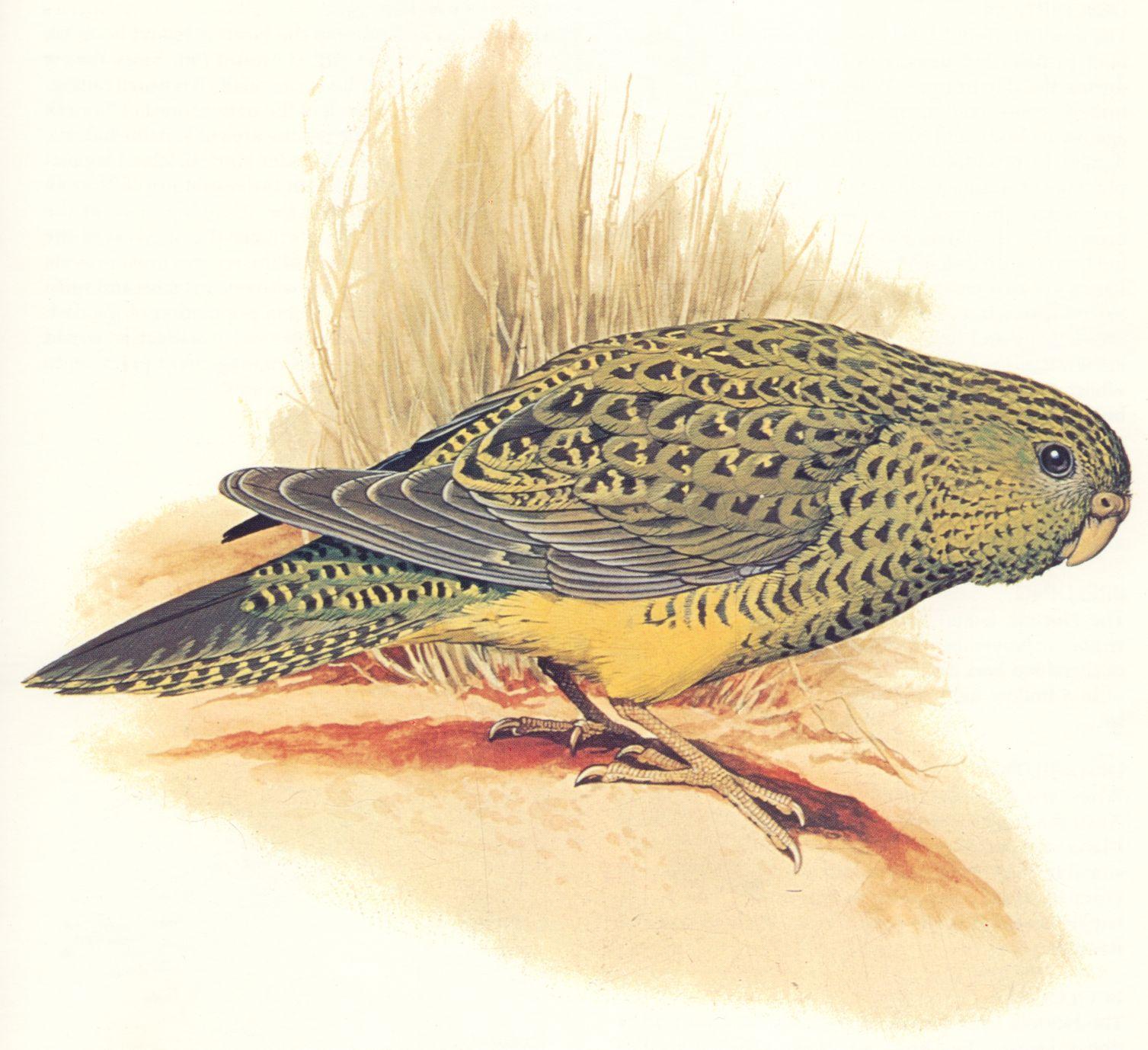Monster hunters of the Southern Hemisphere cfzaustralia@gmail.com
Monday 30 December 2013
Secrecy shrouds world's most 'mysterious' bird
Some good discussion is happening over at The Conversation's website about the Night Parrot - the short answer, of course, is for its own protection!
The Night Parrot has been called the “world’s most mysterious bird”. First discovered in 1845, it was rarely seen alive for most of the next hundred and seventy years, but it has been rediscovered in 2013 by Queensland naturalist John Young.
The rediscovery has been shrouded in secrecy; photo and video evidence of the parrot was presented at an invitation-only viewing, and the Queensland government hasn’t been told the location of the parrot. So, why all the secrecy?
In 2013, Queensland naturalist John Young found what he thinks might be two pairs of Night Parrots, and, to top it off, a nest with three nestlings. Young recently presented a select group of experts with photographic and video evidence of Night Parrots from May 2013, confirming that these were indeed Night Parrots.
Young also made recordings of the parrot’s vocalisations, which he used to draw the birds close enough to photograph.
Young is keeping the Night Parrots’ western Queensland location secret for now. The fragile environments at the locality, if revealed, could be damaged by well-meaning but perhaps over-enthusiastic birdwatchers. The birds appear to have recently bred, and even relatively small numbers of people could have a serious impact. Disturbance could also interfere with research.
There is also the ongoing threat of illegal bird trade. Secrecy at least provides some restraint on this unscrupulous activity.
Read more at: http://theconversation.com/found-worlds-most-mysterious-bird-but-why-all-the-secrecy-18000
Labels:
2013,
discovered,
john young,
naturalist,
night parrot,
Pezoporus occidentalis,
queensland
Thursday 26 December 2013
Australia's 'Bunyip Bird' on the brink
Dubbed Australia's 'bunyip bird', the Australasian Bittern is among the nation's most endangered species, and they've taken a liking to rice crops.
A pilot study conducted last summer identified rice growers as custodians of what appears to be the largest population ever recorded.
Neil Bull from the Ricegrowers’ Association of Australia (RGA) said it was very encouraging to confirm a minimum of 70 individuals using rice crops during the 2012-13 season.
"Only a small proportion of rice crops were surveyed, so the actual number was likely to run well into the hundreds. It's now clear that the rice industry can play in a key role in the conservation of bitterns," Mr Bull said.
"Now that we know rice crops are so important for bitterns, we need to get a more accurate population estimate so that we can monitor them, especially for birds that are breeding," he said.
"We want to get a better idea of what it is about rice crops that bitterns like most.
"Many rice farmers I've spoken to are chuffed to be supporting an endangered species and are keen to adopt bittern-friendly rice-growing guidelines where possible," Mr Herring said.
Andrew Silcocks from Birdlife Australia is encouraging rice farmers to report their sightings of bitterns.
"This is a very poorly-known species and it's a national conservation priority. The more we learn about bitterns, the better chance we'll have of boosting their numbers."
Sightings can be reported online via the Birdlife Australia website.
Read more at: http://www.theland.com.au/news/agriculture/cropping/general-news/bitterns-sweet-returns/2682232.aspx
Labels:
birding,
birds of australia,
bunyip,
bunyip bird,
endangered,
rare bird
Sunday 15 December 2013
No myth-taking what he saw - it was a big cat!
Weeks after the government declared the Blue Mountains big cat file closed, a Sydney father has spoken of a terrifying encounter with a panther-like creature outside his Riverstone, NSW home.
Peter Russell told NSW Police he feared for his life after being stalked by a large, ''completely foreign'' feline predator at Riverstone, on the fringes of dense national park bushland.
It has been sighted at least 12 times in the Riverstone area in recent years.
On December 5, Mr Russell went to investigate why his neighbour's dogs were acting ''so distressed''.
He said, as he looked along the path that led up the street, a very large, broad, cat-like creature ran straight for him.
''This was definitely no dog,'' he said. ''It had a low rumbling growl. It was between knee and hip height, extremely stocky and very fast. I spun on my heel and ran back towards the house. I didn't know that I was going to make it to the door.
''My mind was completely thrown by what I had just witnessed. I thought I was a goner.''
Mr Russell made it safely inside and called Riverstone police.
''The officer laughed and I acknowledged her reaction was understandable,'' he said. ''But I also explained that if some poor kid ends up being taken, and I hadn't called, I would be left devastated.''
Read more: http://www.smh.com.au/environment/animals/blue-mountains-panther-spotted-again-20131214-2ze1p.html#ixzz2nUgwK3zd
Subscribe to:
Posts (Atom)


